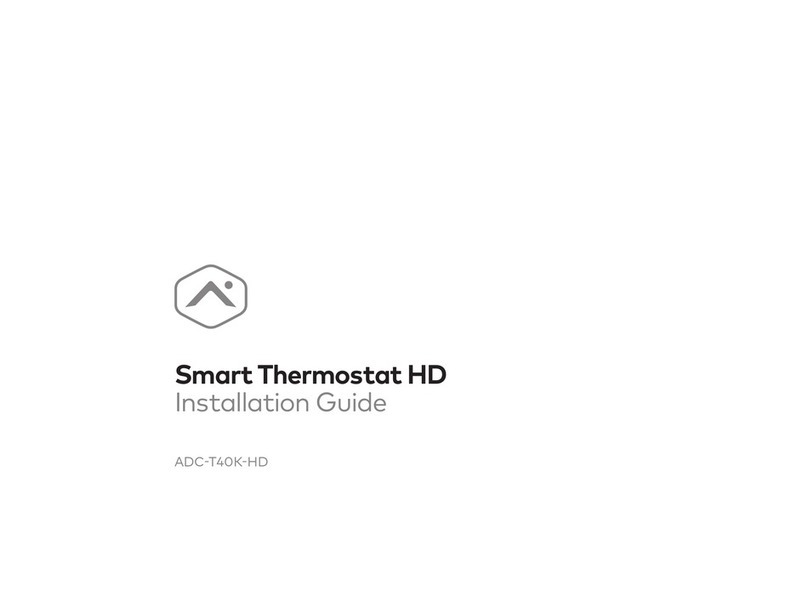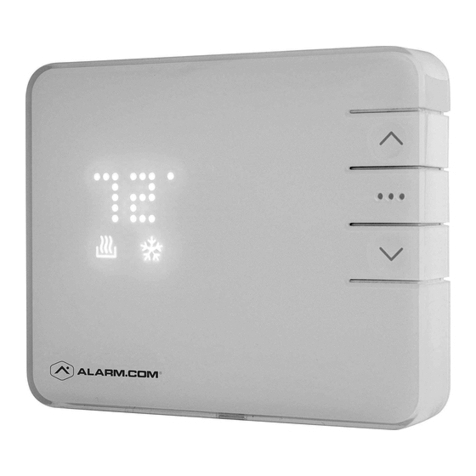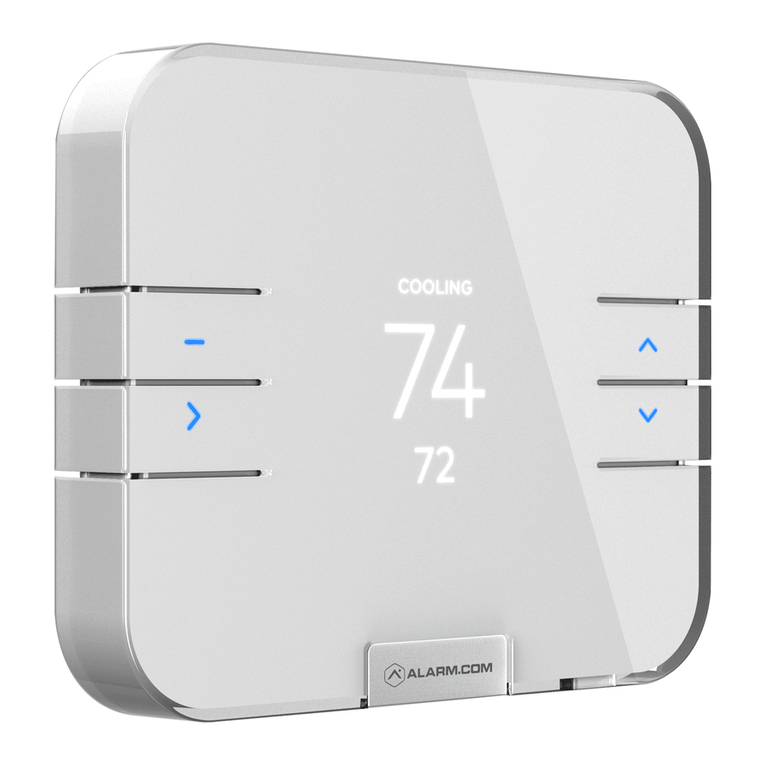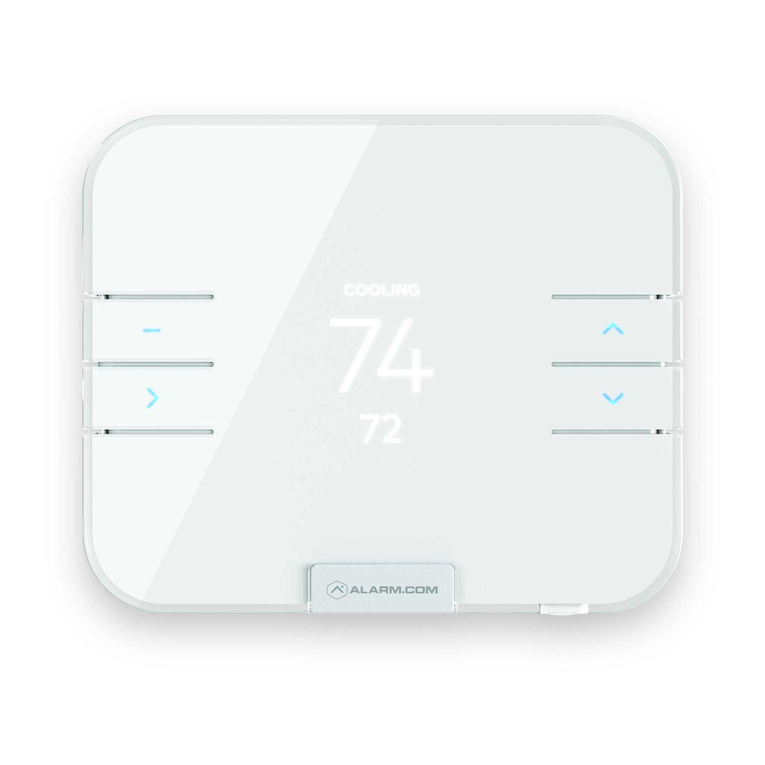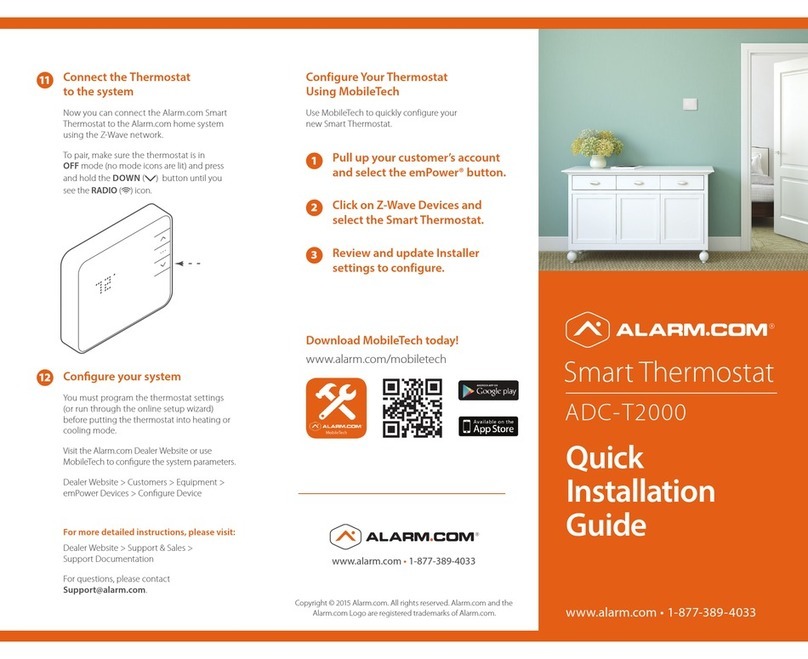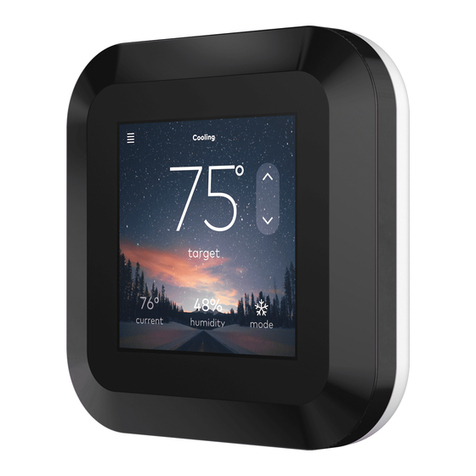
4 | Smart Thermostat Product Manual Smart Thermostat Product Manual | 5
The Existing Thermostat
1. Test the System
Verify that the heating and/or cooling system is
operating properly before you try to install the
new thermostat.
DO NOT test the system by shorting electric
terminals at the furnace or air conditioner.
This may damage the thermostat.
2. Turn Power O
• Turn all heating and cooling systems o. This can
be done at the circuit breaker.
CAUTION: DO NOT REMOVE the existing
thermostat until power has been turned o
at the circuit breaker.
Once power to the heating AND cooling systems
is o, follow these steps:
3. Remove Thermostat Cover
• Remove the cover from the existing thermostat.
Do not disconnect the wires yet.
TIP: Take a picture of the wires before you
detach them from the existing thermostat
for future reference.
4. Label All Existing Wires
• Label all existing wires, one at a time, with the
labels provided.
Make sure the wires are labeled correctly. If you
have an unidentied wire, it may be necessary to
identify the wire where it connects to the heating
or air conditioning equipment.
PREPARATION
If replacing an old thermostat,
the new thermostat can be
mounted in its place.
If a new location is desired
it will be necessary to move
the wiring.
New installations and
relocation should follow the
accompanying guidelines
to ensure the most accurate
temperature reading and
ease of use.
• Mount thermostat on an
inside wall, approximately
5 ft. (1.5m) above the oor
in a frequently used room.
• Do not install in locations near
appliances or devices that
aect the local temperature
such as televisions, lamps,
or dryers.
• Avoid areas that are exposed
to large temperature
variances, such as: direct
sunlight, near an AC unit,
above or below auxiliary heat
and air vents, and drafts
from windows.
• Be aware of what is on the
other side of the wall where
the thermostat is being
installed. Do not install on
walls adjacent to unheated
rooms, stoves, or housing hot
water pipes.
• Damp areas will not only
aect the humidity reading
of the thermostat, but could
lead to corrosion and shorten
the life of the thermostat.
• Install in a location with good
air circulation. Stagnant air
will not accurately reect the
rate of temperature change in
the room. Avoid areas behind
open doors, corners,
and alcoves.
• Wait until construction
and painting are nished
before installing.
LOCATION
